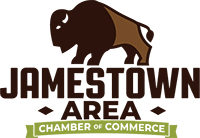Growing your business is exciting — but unchecked growth can also become a costly misstep. Sustainable expansion requires clear direction, systems readiness, and data-driven choices that align with your goals.
TL;DR
When planning for growth, small businesses should:
-
Clarify their purpose and capacity for scaling
-
Invest in financial forecasting and cash flow discipline
-
Strengthen operations and staffing systems
-
Build digital visibility and customer trust early
-
Use measurable goals and regular audits to stay adaptive
1. The Foundations of Smart Growth
Growth begins with clarity. Before launching a new product line or hiring staff, small businesses should evaluate:
-
Why they want to grow (profit, demand, diversification, or prestige?)
-
How they’ll sustain it (systems, cash flow, leadership bandwidth)
-
What success looks like (measurable indicators over vanity metrics)
A practical first step is to build a growth readiness scorecard assessing revenue stability, leadership alignment, and operational maturity. For guidance on designing expansion models, check this out — it explains how to present your vision and secure client or investor confidence through strong business proposals.
2. Key Factors to Evaluate Before Scaling
|
Critical Area |
Why It Matters |
Early Warning Sign |
|
Cash Flow Stability |
Expansion consumes capital before it returns profit. |
Reliance on short-term debt or inconsistent receivables. |
|
Customer Retention |
A loyal base funds sustainable growth. |
Repeat buyers decline or churn rises above 10%. |
|
Talent & Leadership |
Teams must scale with culture intact. |
Overworked managers or slow decision cycles. |
|
Systems & Automation |
Manual processes break at scale. |
Frequent operational errors or bottlenecks. |
|
Brand Visibility |
Growth stalls if customers can’t find or trust you. |
Website traffic and reviews plateau or fall. |
3. Growth Planning Checklist
Financial Readiness
-
Maintain at least six months of operating reserves.
-
Conduct scenario modeling for best/worst-case growth outcomes.
-
Separate capital budgets for technology, hiring, and marketing.
Operational Infrastructure
-
Document all core workflows.
-
Audit technology stack for scalability (CRM, accounting, CMS).
-
Establish vendor or partner redundancies.
Market & Customer Validation
-
Re-survey customers to confirm interest in new offers.
-
Monitor competitor expansion signals.
-
Test product or service demand with pilot campaigns.
4. How-To: Build a Scalable Growth Framework
Step 1 – Map Your Core Value Drivers
Identify what customers consistently pay for. Protect and replicate those strengths before diversifying.
Step 2 – Forecast and Stress-Test Finances
Use cash flow projection tools such as QuickBooks forecasting guides or spreadsheet templates from SCORE. Adjust assumptions quarterly.
Step 3 – Strengthen Team Capacity
Set role clarity now. Use HR platforms like BambooHR or Gusto to automate onboarding and compliance.
Step 4 – Upgrade Marketing and Visibility Systems
Invest in omnichannel visibility. Explore local SEO frameworks and ensure consistent branding across listings.
Step 5 – Track and Review
Use KPIs such as customer acquisition cost, repeat purchase rate, and revenue per employee. Review monthly and pivot when data signals fatigue.
5. Financial Discipline: The Backbone of Expansion
Growing businesses often underestimate working-capital drag — the time lag between new expenses and incoming cash.
To stay liquid:
-
Re-negotiate supplier terms for 45-60-day cycles.
-
Use invoicing automation (e.g., Wave Accounting) to shorten receivable time.
-
Establish a modest line of credit before you need it.
6. Building a Resilient Team and Culture
Scaling magnifies both strengths and dysfunctions.
To retain alignment:
-
Communicate the “why” behind every growth move.
-
Empower middle management with decision authority.
-
Codify company values in hiring, performance reviews, and onboarding.
7. Technology and Automation as Growth Multipliers
Automation helps small teams operate like large ones. Adopt:
-
Cloud accounting and real-time dashboards
-
Customer feedback loops through Google Business Profile updates
These create the infrastructure that supports both customer experience and operational precision.
8. Risk Management and Contingency Planning
Create a risk register for:
-
Supply-chain interruptions
-
Data or cybersecurity issues
-
Talent turnover
Assign each risk a probability and impact score, with a mitigation plan.
Refer to FEMA’s business continuity guide for templates.
9. FAQ – Common Growth Questions
When is the right time to expand?
When cash flow, customer demand, and operational stability all show consistent strength for at least two quarters.
Should I pursue investors or loans first?
Start with internal financing if possible; outside capital is best when it accelerates proven traction.
How do I maintain quality while scaling?
Standardize processes early, use documented SOPs, and run quarterly quality audits.
What’s the biggest mistake founders make during expansion?
Mistaking momentum for readiness — growing faster than systems or people can support.
10. Glossary of Growth Terms
|
Term |
Definition |
|
Cash Flow Forecasting |
Estimating future inflows/outflows to plan liquidity. |
|
Scalability |
A business’s ability to handle increasing demand without breaking efficiency. |
|
Operating Leverage |
The degree fixed costs contribute to profit acceleration during growth. |
|
KPI |
Key Performance Indicator used to measure strategic outcomes. |
|
Customer Churn |
The percentage of customers who stop doing business within a given period. |
11. Featured Tool Spotlight: Workflow Automation Systems
If you’re struggling to coordinate projects across departments, consider integrating workflow automation tools such as Zapier or Microsoft Power Automate. These connect your CRM, invoicing, and email systems—reducing manual data entry and freeing teams to focus on strategy.
12. Conclusion
Sustainable growth isn’t about speed — it’s about readiness, structure, and resilience. By mastering cash flow, strengthening systems, and maintaining clear brand and customer intent, small businesses can expand confidently and weather future turbulence.
Discover the vibrant community of Jamestown and explore endless opportunities for growth by joining the Jamestown Area Chamber of Commerce today!

